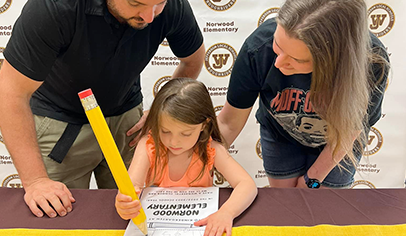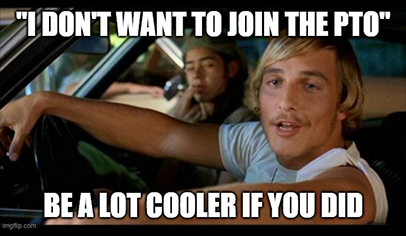"To get something done, a committee should consist of no more than three people, two of whom are absent."
This widely quoted wisecrack from Robert Copeland sums up the way a lot of people feel about committees. "Deliver us from committees," beseeched poet Robert Frost. "Outside of traffic, there is nothing that has held this country back as much as committees," opined Will Rogers. And a wit named Harry Chapman famously skewered committee work:
"Having served on various committees, I have drawn up a list of rules: Never arrive on time; this stamps you as a beginner. Don't say anything until the meeting is half over; this stamps you as being wise. Be as vague as possible; this avoids irritating the others. When in doubt, suggest that a subcommittee be appointed. Be the first to move for adjournment; this will make you popular; it's what everyone is waiting for."
If so many people feel this way about committees, doesn't it make sense to prepare your chairpeople for what lies ahead?
In fact, committees should be a parent group leader's best friend. They are the working groups of volunteer organizations. In a well-run group, committees sweat the details so the officers don't have to. With a strong set of committees, officers can concentrate on the broader business of the group rather than worrying about how many napkins to order for the potluck.
But committees generally are only as effective as the people who chair them, and most groups have committees led by parents with varying degrees of experience and confidence.
In a best-case scenario, the committee leader is an enthusiastic, experienced parent group volunteer who receives extensive transition training from the prior chairperson, along with comprehensive files of the committee's past work. Unfortunately, the best-case scenario is rarely reality. More often, files are lost, the past chairperson is unreachable, and the current chairperson is doing the job simply because no one else would. She wants to get involved, but she may not know her way around the school or the group. She's not sure how to get started or how to use her volunteers well. She'll do the best she can, but she sure could use a little training first.
To prepare your key volunteers for the coming months, consider implementing a formal orientation for committee leaders. Besides putting veteran leaders and newcomers onto more equal footing, it turns everyone's focus in the same direction and answers all questions at one time, ensuring that the year's activities start with a bang.
"But wait!" you say. "We're lucky to have a handful of active volunteers. We won't worry about training our committee chairpeople until we have enough volunteers to actually form the committees!" Committee leadership orientation can still be good for your group. The same benefits can be realized even if you gather only a few volunteers. When the general parent community learns that your group provides training, you could see increased participation.
A strong committee leadership orientation program has two major components: the committee chairperson folder and the group orientation session. The folder, one for each committee, is a reference tool for the year and a place to keep files. It can include committee-specific items like a volunteers list and budget, as well as general items like expense forms and the PTO officers' contact information. The group session is the kickoff meeting for committee chairpeople. It's an effective way to bring everyone up to speed, welcome new volunteers, and facilitate communication, among other things.
Creating the Folders
The committee chairperson folder is a collection of information that will help each committee's lead volunteer be organized and knowledgeable. Create the folders, one per committee, at the start of the school year, and distribute them as soon as possible. Even if a chairwoman is repeating her role, create a new folder; the details will vary a bit year to year, and all your chairpeople should get consistent and updated information. Suggested contents include:
An invitation to the formal Committee Leadership Orientation group session; make this a separate sheet so it doesn't get lost in the folder.
A committee-specific description that defines the committee's purpose and scope; one paragraph with the PTO's expectations is enough.
General tips and hints for all chairpeople; list the "secrets of success" to make the job easier.
A committee-specific volunteers list of names, phone numbers, and email addresses; collect the information from committee sign-up forms.
A list of names, phone numbers, and email addresses of officers.
A list of committee chairpeople, with names, phone numbers, and email addresses.
Key dates for the year, including PTO meetings and events; get input from the principal to include school events like concerts, and field trips.
"Tips From the Treasurer," with the specific committee's budget; provide instructions for handling PTO money, using financial transaction forms, and turning in reimbursement requests.
Blank financial transaction forms; include a reimbursement request, check request, and deposit notice, each on different-color paper.
Flyer design quality checklist; evaluate your flyers before photocopying them.
Sample flyers, including for an event announcement and volunteer recruitment; they're helpful as templates and to get ideas about layout, content, and design.
A year-end committee report form; complete it after an event or at the end of the school year to help future committee volunteers.
Download the committee orientation folder contents list
Effective Group Orientation
Call it a kickoff or call it a training session, by any name the group orientation is an essential part of preparing your group's committee leaders. It has several important benefits:
Everyone begins on the same page. It sounds trite, but it's true—and important. If all of your leaders hear the same information at the same time, the message is clear and consistent. The general board can set expectations, answer questions, and facilitate idea-sharing between participants.
New volunteers feel welcome, confident, and well-prepared. If a new parent feels she won't be abandoned, she is more likely to volunteer that first time. Training can also break down the negative perception that the PTO is a clique.
Experience is passed along. Encourage all committee leaders, even experienced ones, to attend the training. Their input to the group discussion is especially valuable. By gathering everyone together, all volunteers learn insider tips and get knowledge that usually takes years to develop.
Group members meet one another. The most obvious benefit of a group session (and one of the most valuable) is the interaction your volunteers will have with each other. Few people know everyone else, even at a small school. Start the meeting with an icebreaker, use nametags, and encourage introductions to make everyone feel comfortable.
To make the session most effective, formally invite committee chairpeople. Follow up the written invitation with a personal phone call. The best time for the orientation meeting is early in the school year, before any substantial work has begun. Consider holding two sessions, one during the day and one in the evening, to make it possible for all chairpeople to participate. Use elected executive board officers to present the program.
Give serious thought to the agenda. You want to hit both the obvious and the subtle points of working in your PTO. Prepare a formal presentation on overhead transparencies or in PowerPoint, and create handouts that complement the presentation. An agenda could include the following:
Fun facts about your PTO
Welcome and introductions
Committee chairpeople responsibilities (focus on your committee's purpose; communicate; delegate and involve; stay within budget; keep good records; and train your successor)
Question-and-answer time
Download a committee orientation PowerPoint template
By committing to training its leaders, your PTO takes a significant step toward being the best it can be. Active training sends the message that your parent group is organized, is committed to developing its members, and won't leave its volunteers to flounder on their own. And that might just be enough to gain some new leaders.















